

Carl Barks was a dedicated environmentalist
long before the term had even became a household word, and his
interest in the environment stayed with him all of his life.
Possibly, being born and raised on a farm had an impact on his
way of thinking. Later in life - when he was busy writing and
drawing his comic books - Barks would occasionally disclose some
of his views in the stories. Not often, though, because he was
also very conscious not to risk being perceived as a schoolmaster
forcing learning into the readers' heads.
After his official retirement in 1966 Barks was repeatedly asked
to write new duck manuscripts and during the first part of the
1970s he churned out 24 new stories starring the Junior
Woodchucks. Many of them were relatively harsh attacks on the way
we treat our surroundings, thus he broke with his former
reluctance to 'step on anyone's toes'.
Even later in life when Barks was extensively interviewed about
his stories, he would sometimes seize the opportunity to
comment on the general decline of the environment as he saw it.
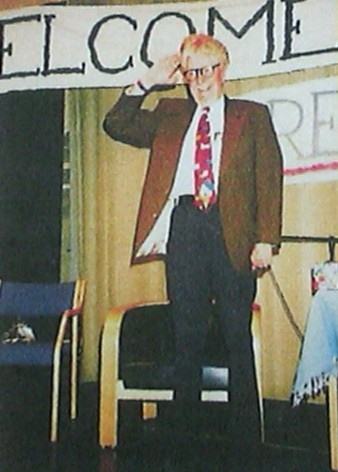 |
Exalted
Hightail #1 Barks' nascent interest in the
environment was reflected in this statement that he made
in his golden years: I was never a Boy Scout, but oh,
I wanted to be one when I was a kid about ten or eleven
years old. But there wasn't anyplace where I could ever
join the Boy Scouts. |
| WDCS142
'Houseboat Vacation' Several
of Barks' stories, especially from the 1950s, may be
taken as his eye-openers to the readers on how we treated
the environment back then. In this story from 1952 Donald
and the nephews are having a quiet vacation on a
houseboat on Lake Erie. At one point the nephews decide
to have a swim but they are immediately deterred, when
they find themselves covered in mud. |
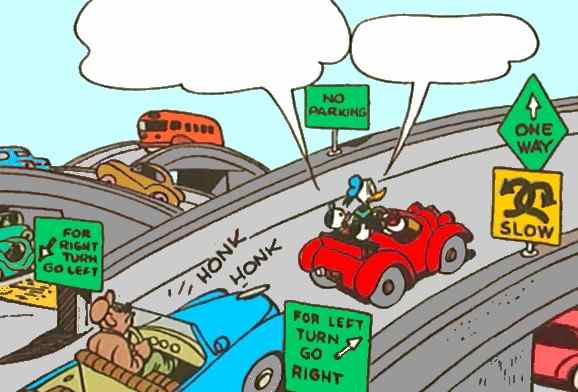 |
WDCS149
'The Flipism Story' In
1953 Barks wrote this story in which veritable forests of
traffic signs played a prominent part. Barks satirized
over the excess numbers of puzzling road signs which, in
the story, brought Donald down. Things have not exactly
improved much since then... |
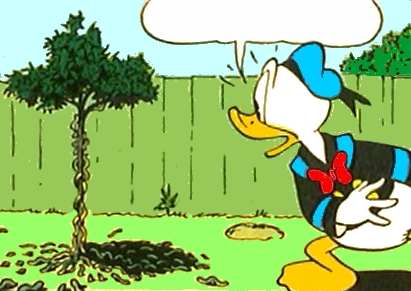 |
WDCS189
'Backyard Trouble' This story from 1956 is a good example of a narrative
taking place in the local habitat that many of us are so
familiar with - our garden. Here Barks is really giving a
lesson on how Mother Nature works independent of what man
wishes. |
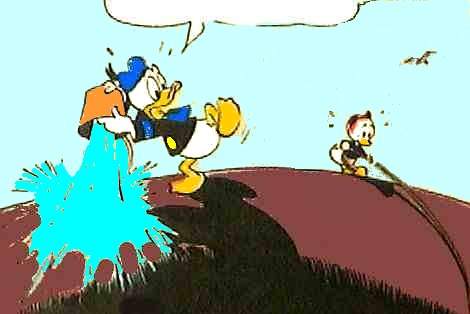 |
WDCS193 'The Whale Catcher' Barks wrote a handful of stories in which
the preservation of wildlife was the main topic. In this
story from 1956 he gives a lesson in how to care for a
giant animal (and why it is not a good idea!). Later on,
in his HDL years, Barks would take up
the whale theme again in further stories. |
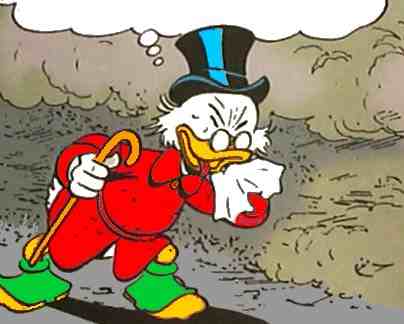 |
U$18 Land of the Pygmy Indians In 1957 Barks made his strongest statement
against the way people mistreated their surroundings by
thoughtless pollution of air and water. In this story he
really made a bogey of Duckburg that was on a downward
slope caused by industrial air pollution. It was even too
much for Scrooge - who partly earned money on the
pollution - and he bought some land up north by the Great
Lakes in order to get clean air down his lungs. Here he
received another lecture, this time from the area's small
inhabitants, who taught him that no one can own the wind,
the fishes or the land. |
The HDL Series From
1970 to 1974 - long time after his official retirement
from Western - Barks wrote and sketched 24 stories for
the Huey, Dewey and Louie Junior Woodchucks'
comic book series (HDL). A listing can
be seen
HERE. In these stories
Barks mostly campaigned against industrial misuse of the
world's ecology and he often commented on the general
deterioration of the environment. This, in fact, happened
long before the environmentalists 'took over' and Barks
may be seen as a front runner for the coming movements
holding one of the most powerful tools for getting his
messages through - the comic book. |
| Wildlife Images Barks used his golden years as an environmentalist in a more unobtrusive way. His main interest was the welfare of animals. One of his favourite charities was 'Wildlife Images', a non-profit North American animal rehabilitation corporation where injured and orphaned animals are cared for until they can be returned to the wild. Barks would occasionally visit their branch near his home in Grants Pass, Oregon. |
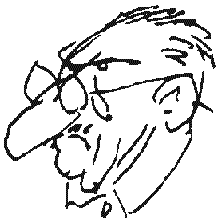 |
The Final Words Barks
did not mellow over the years. On the contrary, he made
these two eye-openers during late interviews. They should
stand alone as Barks' uncompromising comments to the way
we (still) treat the world we are given: |
| http://www.cbarks.dk/THEENVIRONMENTALIST.htm | Date 2005-11-25 |